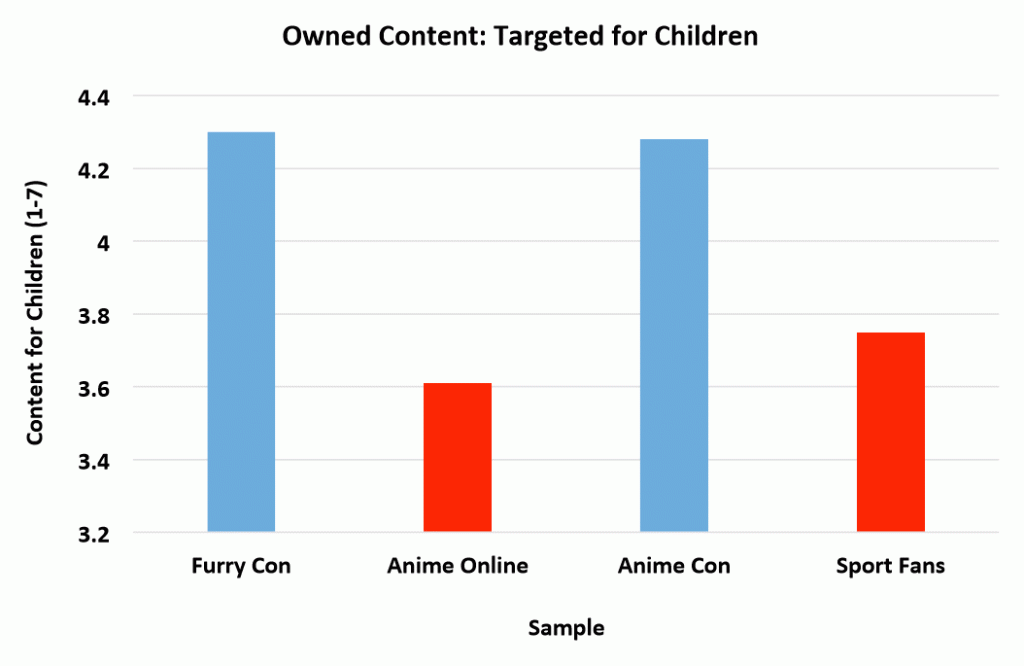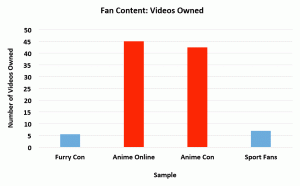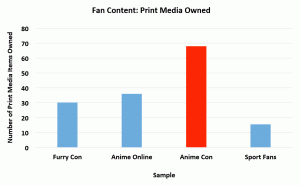In a series of studies we asked participants from different fandoms (furries, online anime fans, convention-going anime fans, and fantasy sport fans) about the fan-related media they owned. In addition to asking about the amount of each type of media owned, we also asked them to rate the media they owned on several dimensions. The results are displayed in the figures below, with differently-colored bars being statistically significantly 1different.
Much of the anime fandom is organized around studios and companies that put out animated television shows and movies. As such, it is unsurprising that anime fans, whether online or convention-going, own far more video-based content than either furries—whose content is largely produced by independent artists—or fantasy sport fans—whose interest in sports manifests as watching games and managing fantasy teams, not collecting and watching videos about sports. In contrast, print media, which includes magazines, books, and visual artwork, are much more prevalent in all three fandoms than videos. In this regard, convention-going anime fans stood out, suggesting that buying manga and artwork may be something more available to convention-going anime fans, who may have more expendable income than online anime fans. However, this would not account for the difference between convention-going anime fans and furries who, in this sample, were also convention-going. It is possible that the inclusion of “manga” in this category—something present in anime culture but which is largely absent in furry culture, accounts for the difference.
Furries and convention-going anime fans are the most likely to own content that is targeted toward children. Follow-up analyses revealed that, at least for convention-going anime fans, the younger a fan was when they got into the fandom, the more likely they are to own content targeted towards kids. The same was not true for furries. Future research may help to discern the reason for this finding.

Given the often violent nature of many anime shows (which often feature fighting robots, swords and gunplay, and fighting/martial arts), it follows that, relative to furry participants, anime fans are more likely to own violent content. Similarly, given that aggression is inherent in many sports (e.g., football, hockey), the finding that fantasy sport fans owned more violent content than furries is also unremarkable.

With regard to pornography, furries were significantly more likely than the other groups to own pornography-themed content, nearly always in the form of drawn artwork, often portraying one’s own fursona and/or other characters/fursonas. Interestingly, convention-going anime fans are more likely to own pornographic content than online anime fans, perhaps owing to the ability to commission artwork or to being older and more likely to live on one’s own (e.g., less parental scrutiny). Given the focus of fantasy sports on sports themselves and team management, it is unsurprising that very little content in this fandom would be deemed “pornographic.”




Hi! I think the addition of sci-if/fantasy fandoms and comic book/superhero fandoms to the comparison charts would be illuminating.
I’m a puppy